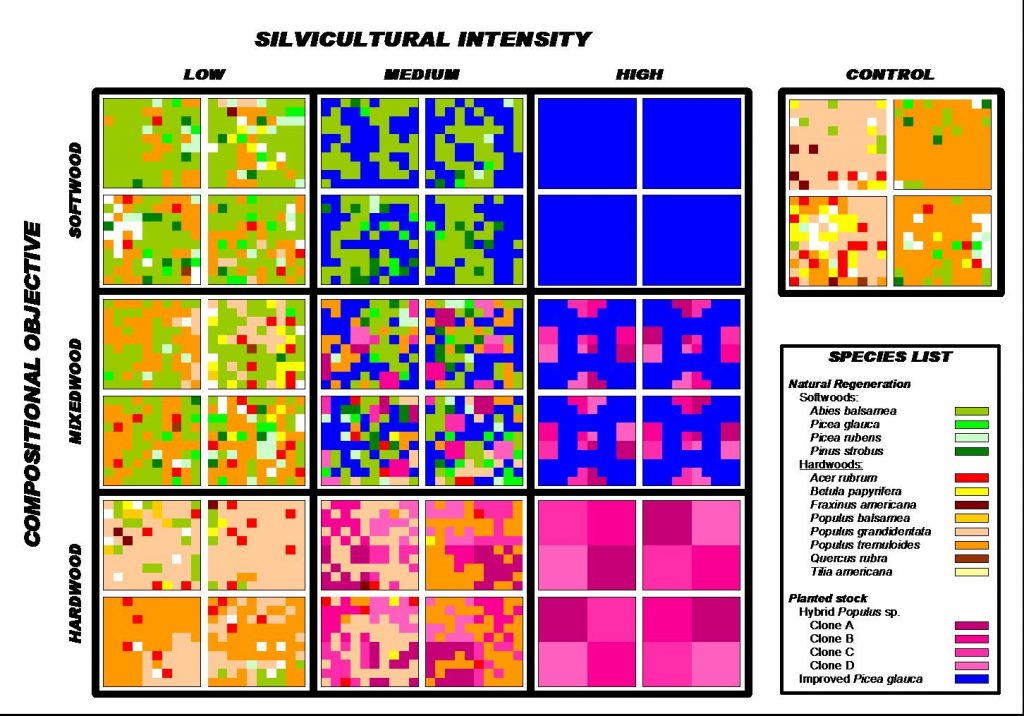Silvicultural Intensity Experiment (R. Wagner)
 Experiment Design (3 species compositions x 3 silvicultural intensities)
Experiment Design (3 species compositions x 3 silvicultural intensities)
Background
Millions of acres of forest in northern Maine are in a relatively young condition following clearcut harvesting. Although natural regeneration can be abundant, the species composition of this regeneration is often not that desired by the landowner. Many of these landowners ponder whether it is best to start over, or work with what is there and make the best of it? This study seeks to examine how various intensities of silviculture and different stand composition objectives work together to produce desired outcomes.
Objectives
- Establish a controlled experiment quantifying the growth and yield response of young stands in northern Maine to varying intensities of silviculture and different compositional objectives.
- Document the ecophysiological mechanisms affecting the dynamics and productivity of young forest stands under varying intensities of silviculture and different compositional objectives.
- Compare the energy requirements and financial returns associated with achieving forest stands under varying intensities of silviculture and different compositional objectives.
Study Design
The study is installed on a 23-acre (9.2 ha) clearcut established in 1995 as part of the initial AFERP gap harvests, and is located within the Penobscot Experimental Forest in Bradley, Maine. The stand regenerated naturally and was predominantly aspen (Populus tremuloides and P. grandidentata) and red maple (Acer rubrum) with scattered patches of overtopped white pine (Pinus strobus), balsam fir (Abies balsamea) and red spruce (Picea rubrum). Other common tree species included paper (Betula papyrifera) and grey (B. populifera) birch, red oak (Quercus rubra), and white ash (Fraxinus Americana).
The study consists of ten treatments that are based on a factorial design of three levels of silvicultural intensity (low, medium or high) and three compositional goals (pure conifers, pure hardwoods, or mixedwood). A control is also included in the design. High and medium treatments were planted with genetically improved stock of white spruce and hybrid poplar.
Current Research
The experiment serves as a basis for the PhD research of Andrew Nelson. His research will be focused on investigating the effects of below-ground resources and conditions on above-ground carbon sequestration between the treatments. He will also be working on using growth and yield models to project carbon sequestration 30 years into the future.

